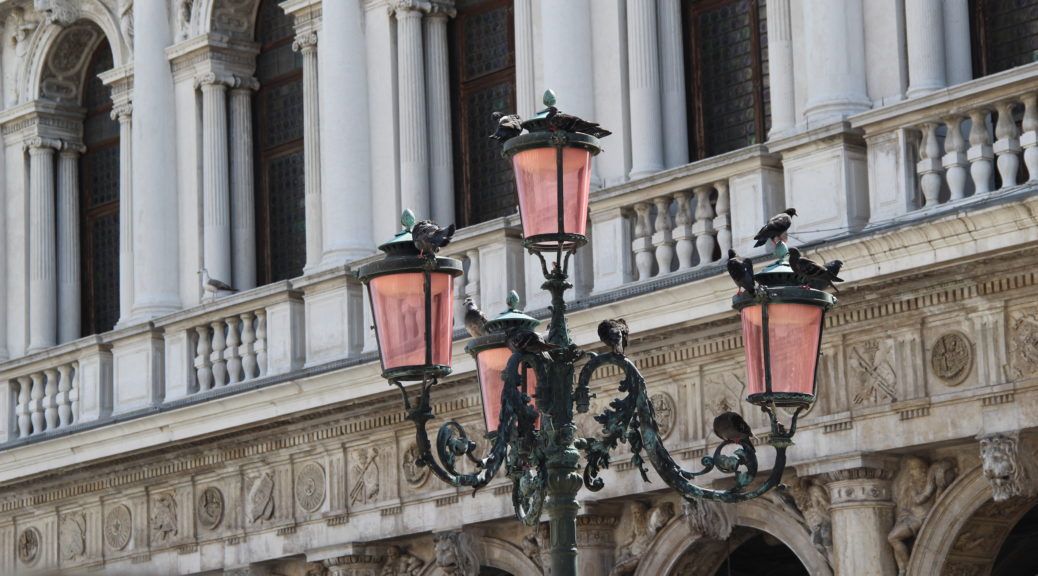
Venice (Part Two)
This blog will focus on the Piazza San Marco (St. Mark’s Square), St. Mark’s Basillica, and Doge’s Palace. The first picture below is one I purchased and depicts St. Mark’s Square from above. St. Mark’s Basillica is toward the back and the large tower on the right is St. Mark’s Campanile. On the left is Procuratie Nuove (second picture). The Procuratie Nuove was originally built to serve as office space but now houses museums. It construction began in 1586.
The clock tower is on the same side of the square; you can identify its location by the statue on the top of the tower on the left in the first picture. Pictures of the clock tower are the last ones in this section. It consists of the tower and two buildings on either side of the tower. It was built in the 15th Century, though a newer clock mechanism has since been installed. At the very top are two bronze figures which strike the bell on the hour. One is young and the other old to suggest the passage of time. A winged lion, a symbol of Venice, is under these statues. Underneath this is a statue of the Virgin Mary with Jesus. The blue panels show the time – the hour in Roman numerals and the minutes in the numbers with which we are more familiar. Finally there is a clock face with a blue background and gold zodiac symbols which date back to the 1490’s. A gold arrow points to the hour. The surrounding Roman numerals are in marble.
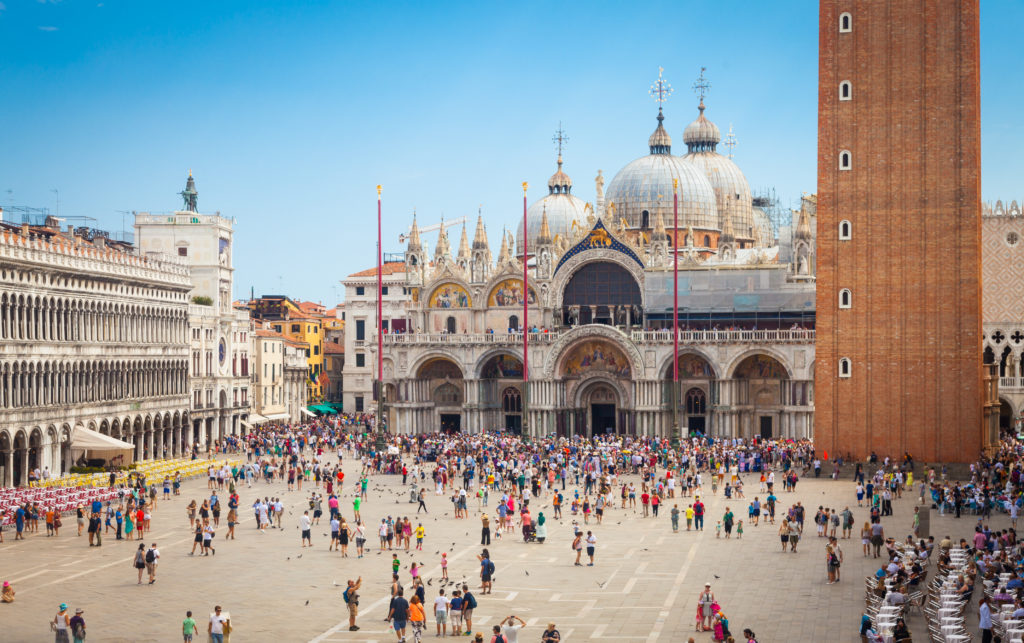
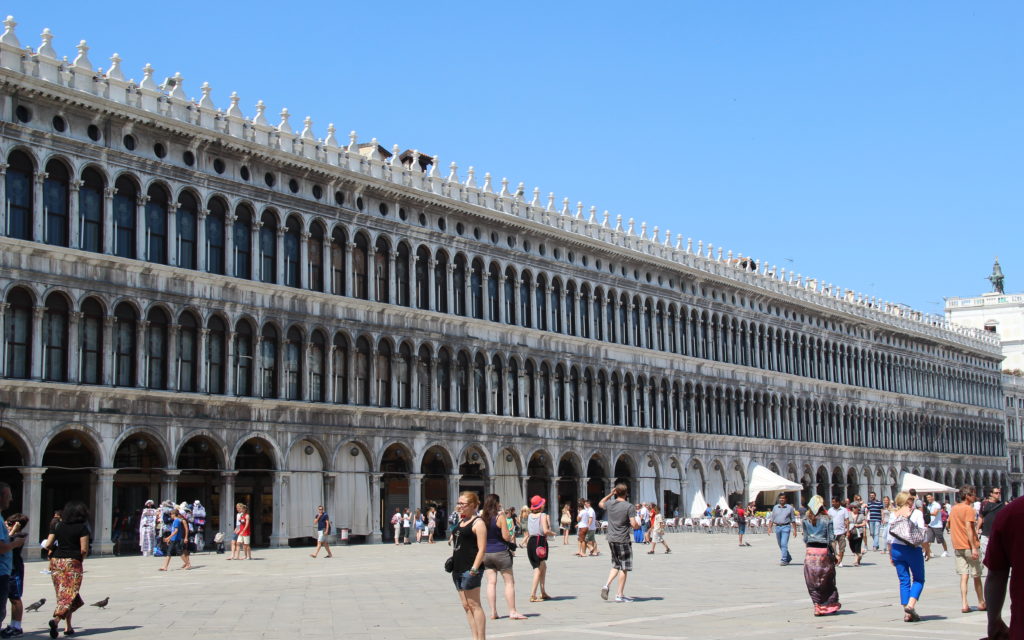

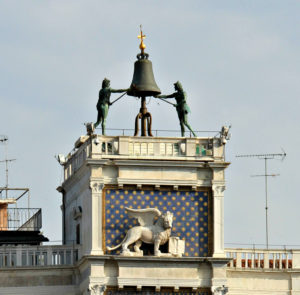
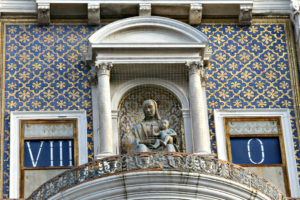

Opposite the Procuratie Nuove is the Procuratie Vecchie. It would be on the right side of the Shutterstock picture above but is not visible in the photograph. It is pictured below. It was built in the 12th Century and served as office and living space for the Procurator of San Marco. Originally the procurator administered St. Mark’s Basilica. Later, the number of procurators increased as did their responsibilities. Being appointed to this position was a high honor.
Also pictured is St. Mark’s Campanile, a 7th Century belltower. It has served as both a military watchtower and lighthouse. It was rebuilt in the early 1900’s after the original structure collapsed in 1902. The original five bells were recast and used again. The golden weathervane is a statue of the angel, Gabriel. This picture was taken when we were in a boat in the lagoon.
The area near the lagoon is called the Piazzetta. The two large granite columns are topped with symbols of the patron saints of Venice. The lion symbolizes St. Mark. The other, St. Theodore, was Venice’s patron saint before Mark. He is holding a spear over a crocodile.
An area just past the clock tower and to the left of St. Mark’s Basilica is the Piazzetta dei Leoncini. It is named for two small lions, one of which is pictured below.

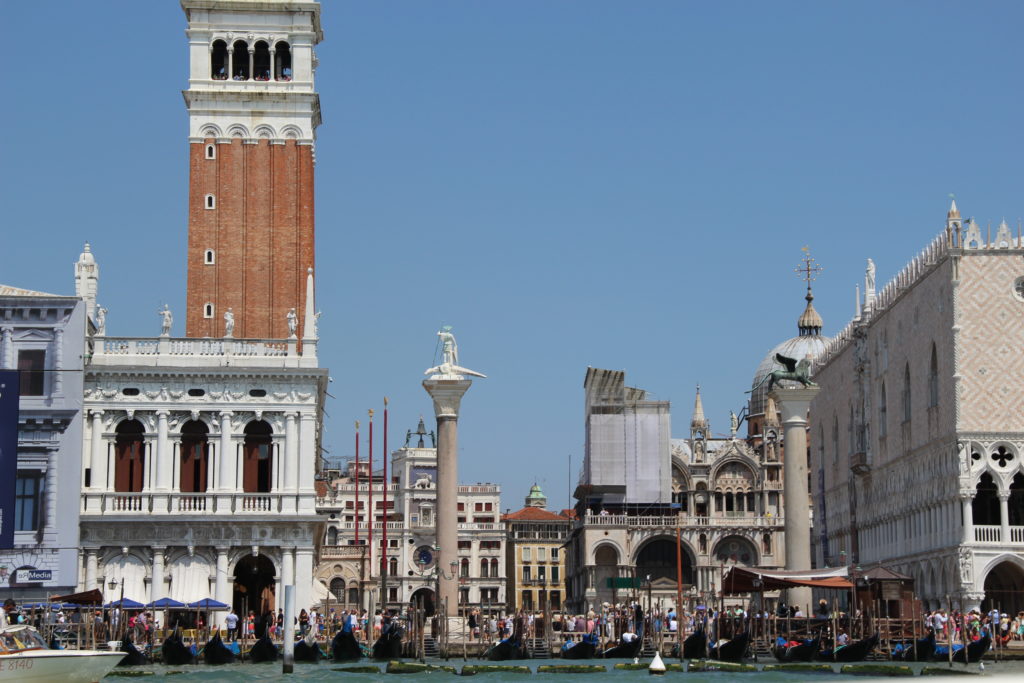




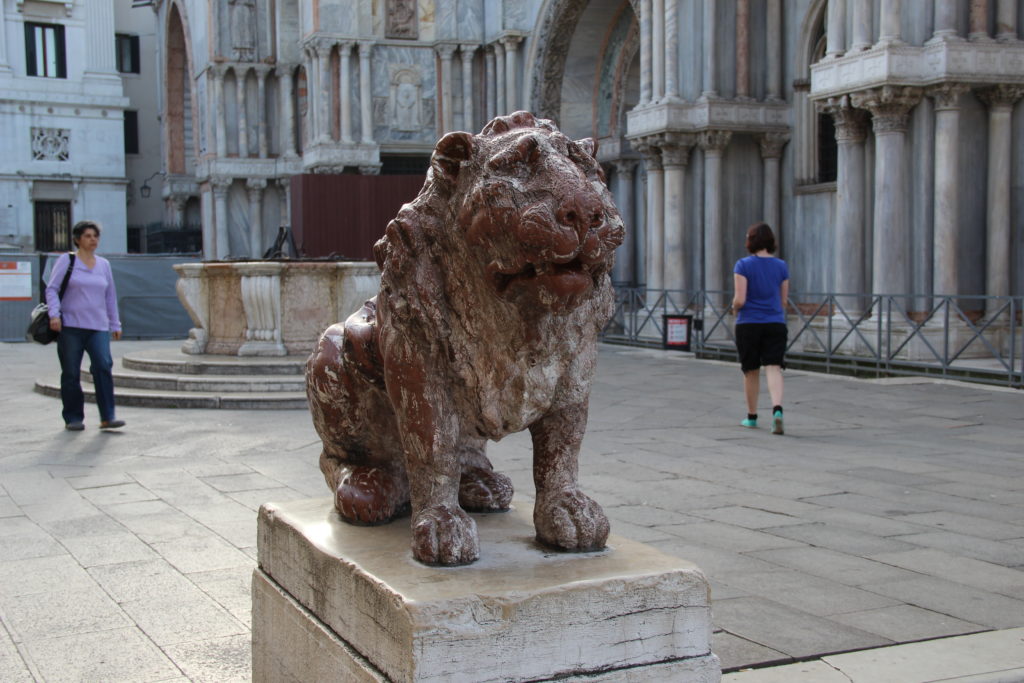
The focal point of St. Mark’s Square is St. Mark’s Basilica. Originally constructed in 828 to hold the releics of St. Mark, the current cathedral was rebuilt in 1063. It served as the doge’s private chapel until 1807 when it was made the city’s cathedral. There are five portals with mosaics. One of the four smaller ones is pictured and represents St. Mark’s remains being received by the Doge and people of Venice. The mosaic over the main entrance is entitled The Last Judgement. The statue at the very top is St. Mark, surrounded by angels.
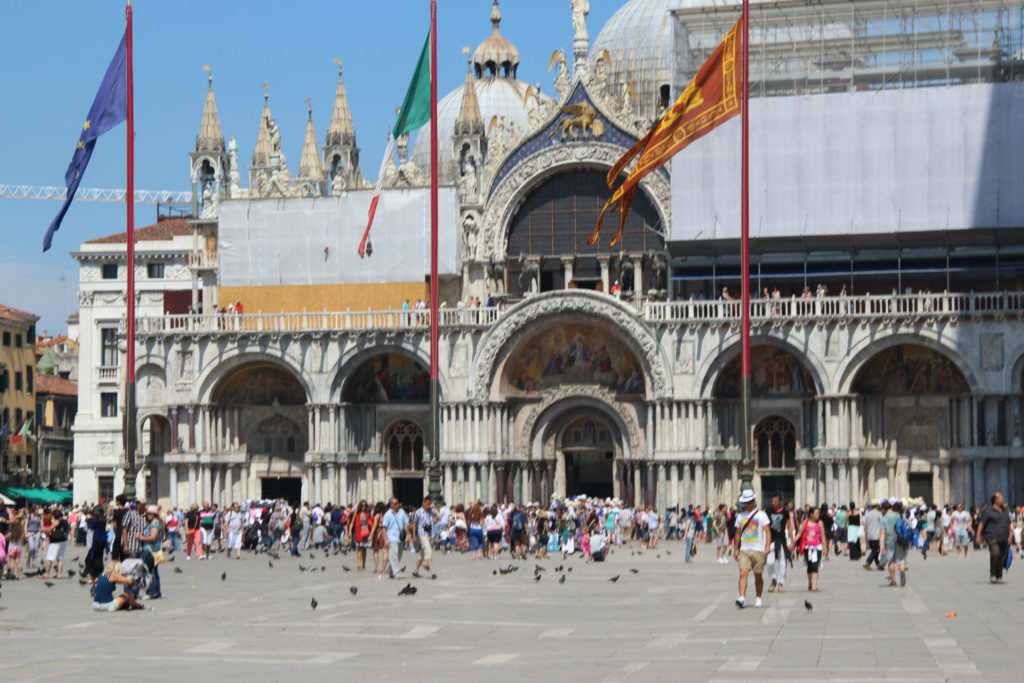

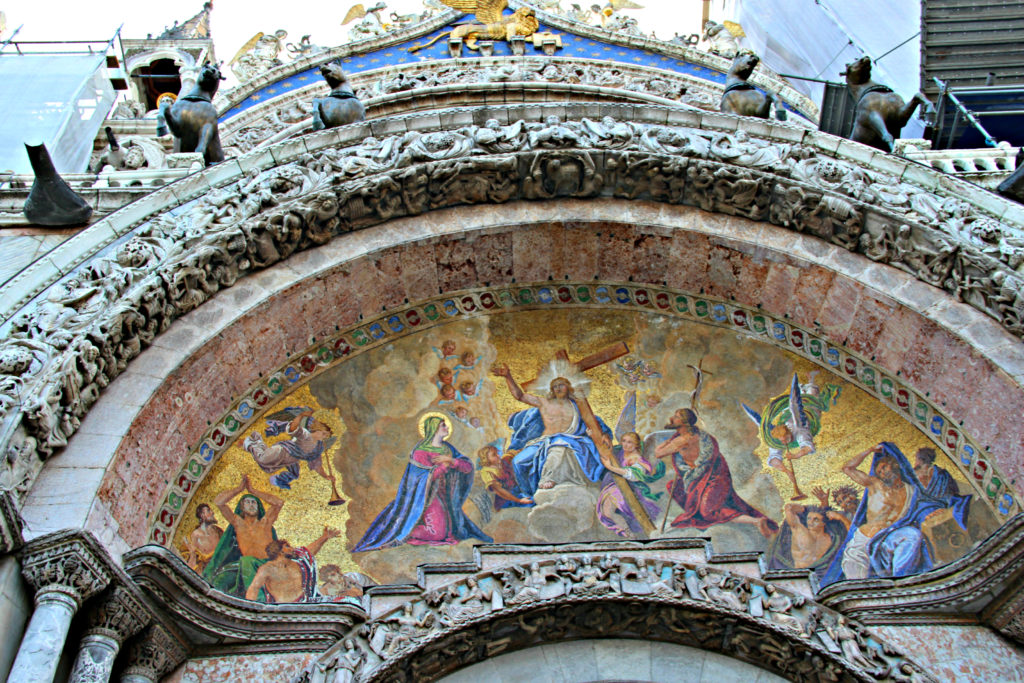
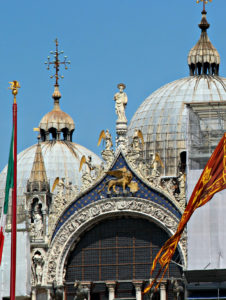
The pictures below are of the interior of the Basilica. The pictures show one of the marble columns, the top of the rood screen, the pulpit, the marble floor, a cupola, and some of the mosaics adorning the church. The rood screen separates the congregation from the high altar and is topped with fourteen saints. The cupola pictured is The Ascension Cupola, dating back to the 12th Century. It shows Christ being taken to Heaven by four angels. The mosaic archway pictured is an example of almost 8,000 square meters of mosaics on the ceiling and walls.






Next is the Doge’s Palace. The doge was the magistrate of Venice. Doge’s Palace is adjacent to St. Mark’s Basilica. Originally built in the 9th Century, it has been rebuilt due to fires. The third picture below shows the door connecting Doge’s Palace with St. Mark’s Basilica. The doge is kneeling before the lion of Venice. The lion is holding an open book indicating that the statue was completed at a time of peace (a closed book would symbolize war).
The next picture is similar to a mail slot and is outside Doge’s Palace. Individuals could secretly report others who were stealing from the state or violating the law in some way. It is translated, “Secret denunciations against anyone who will conceal favors and services or will collude to hide the true revenue from them.”
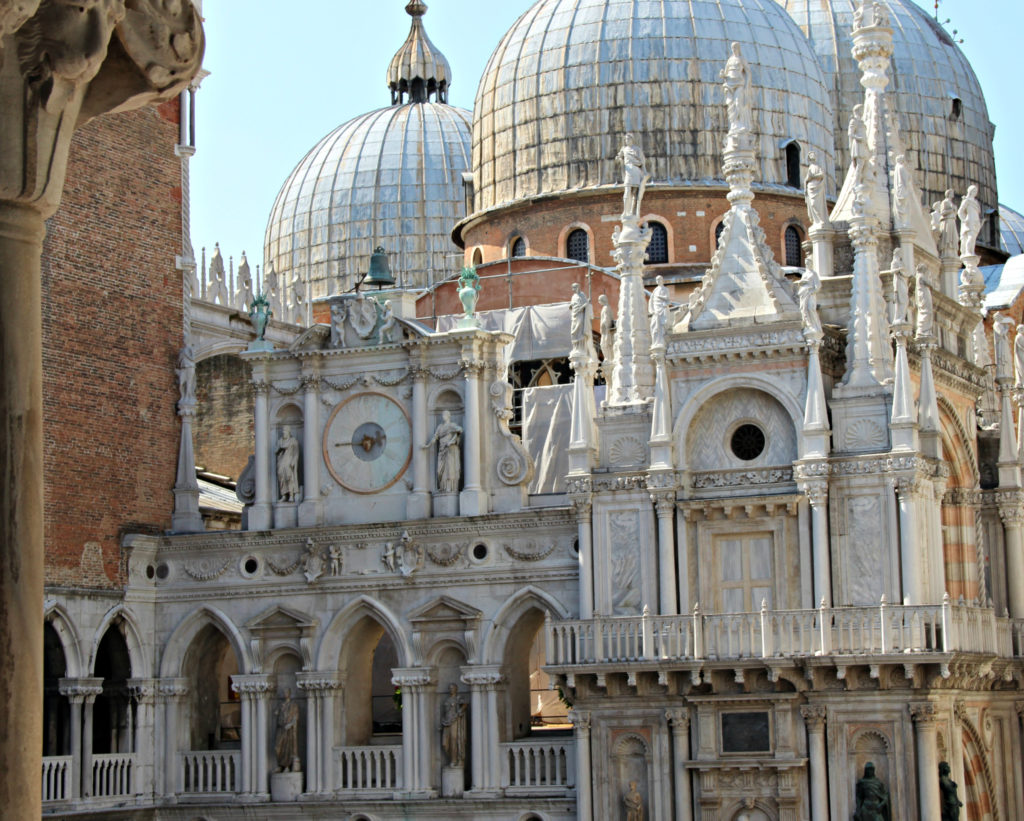
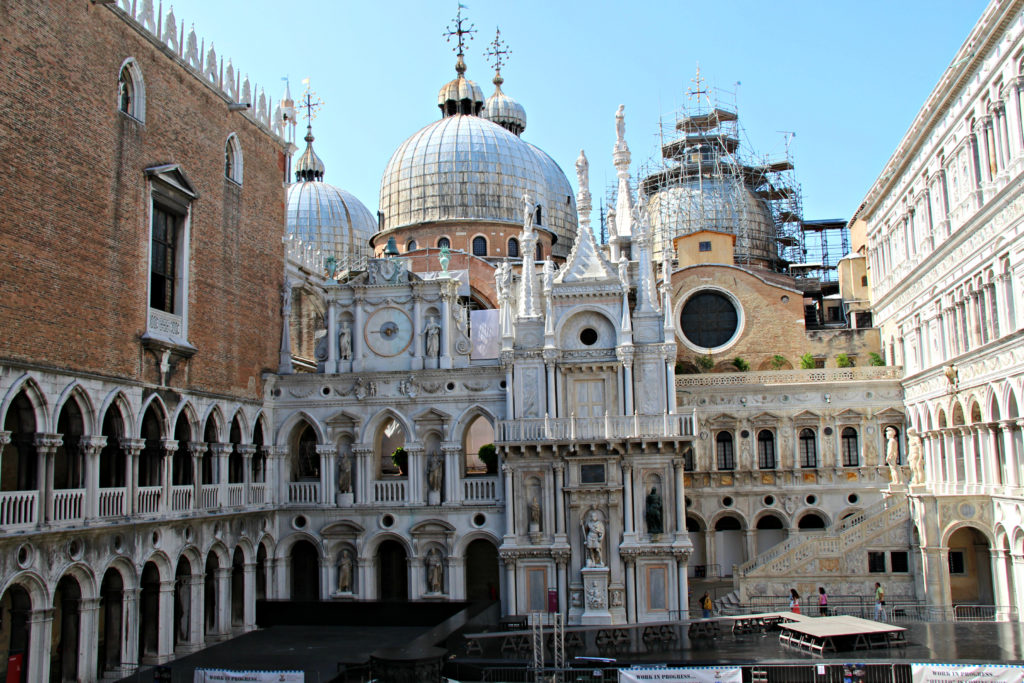
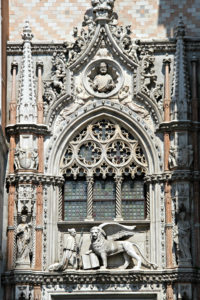
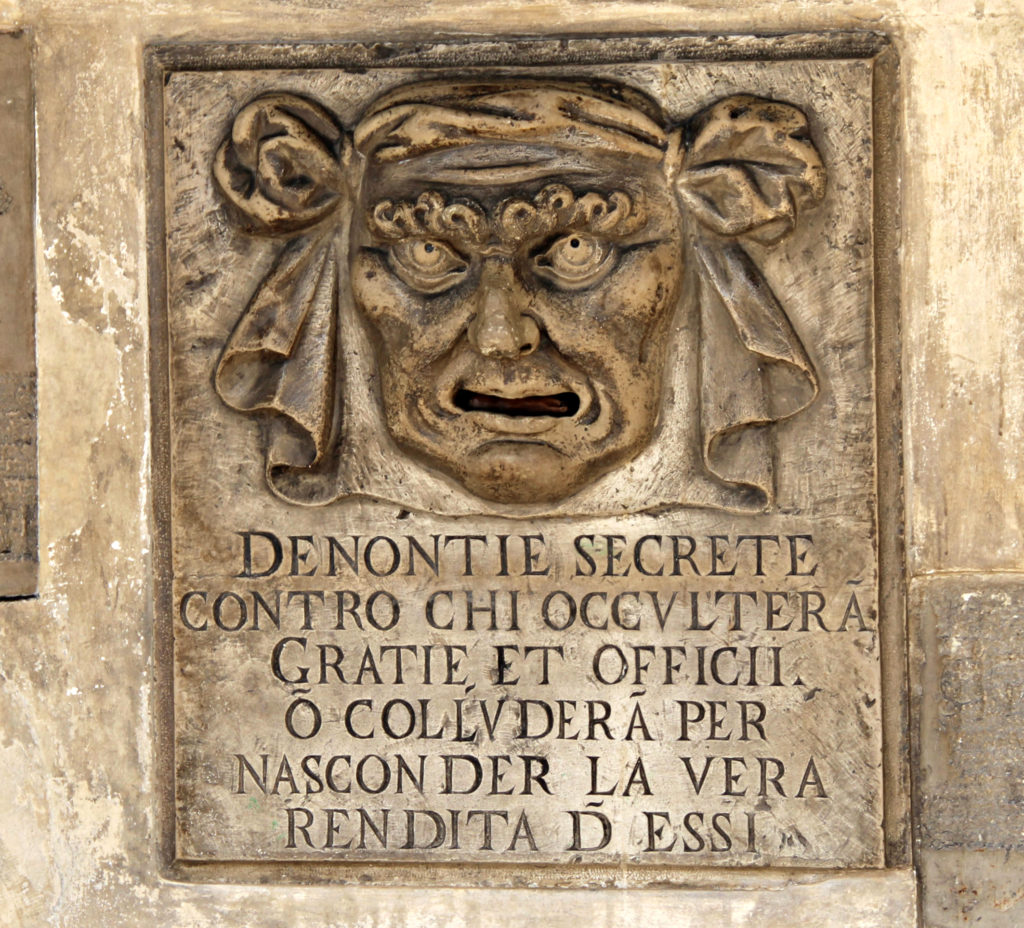
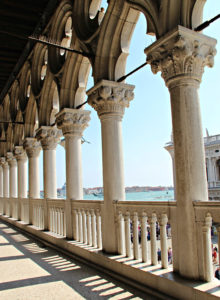
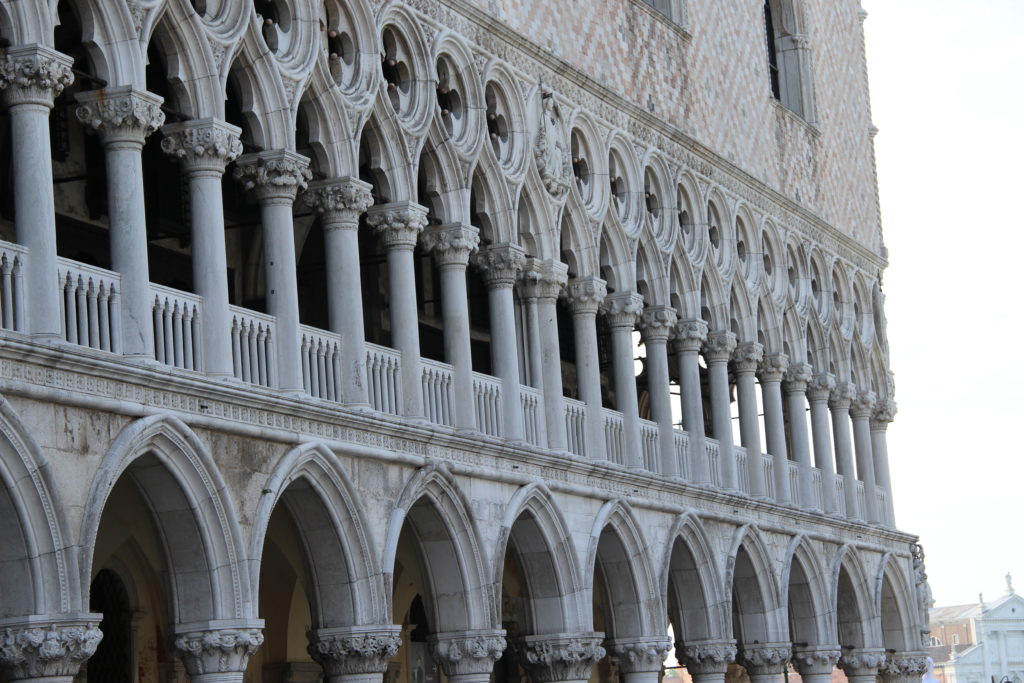
I am going to return to St. Mark’s Square. The first two pictures simply show people enjoying the square. The next picture depicts the flooding that sometimes occurs in the Square. St. Mark’s Square is just a little above sea level. Water from rain, etc., goes into the drains and then is carried to the Grand Canal. This works well unless the sea level is high. In such instances, the sea water backs up into the drains and enters the Square. While we were visiting, it was dry. The picture below shows the flooding that occurs with the high sea level.
The last two pictures were taken from the water taxi that took us to the airport for our trip home.
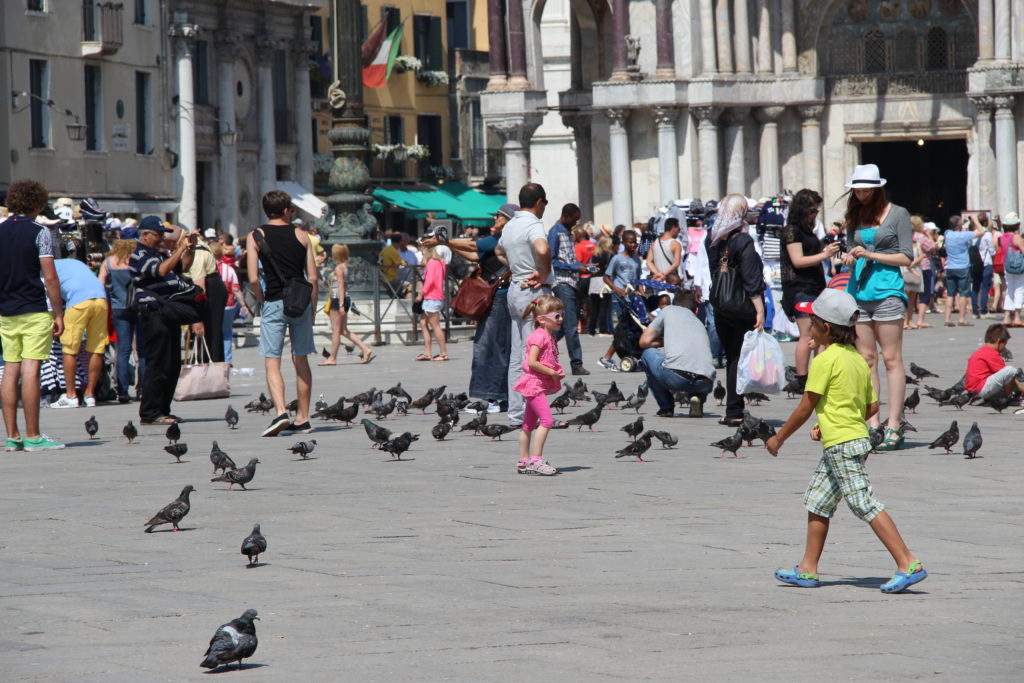


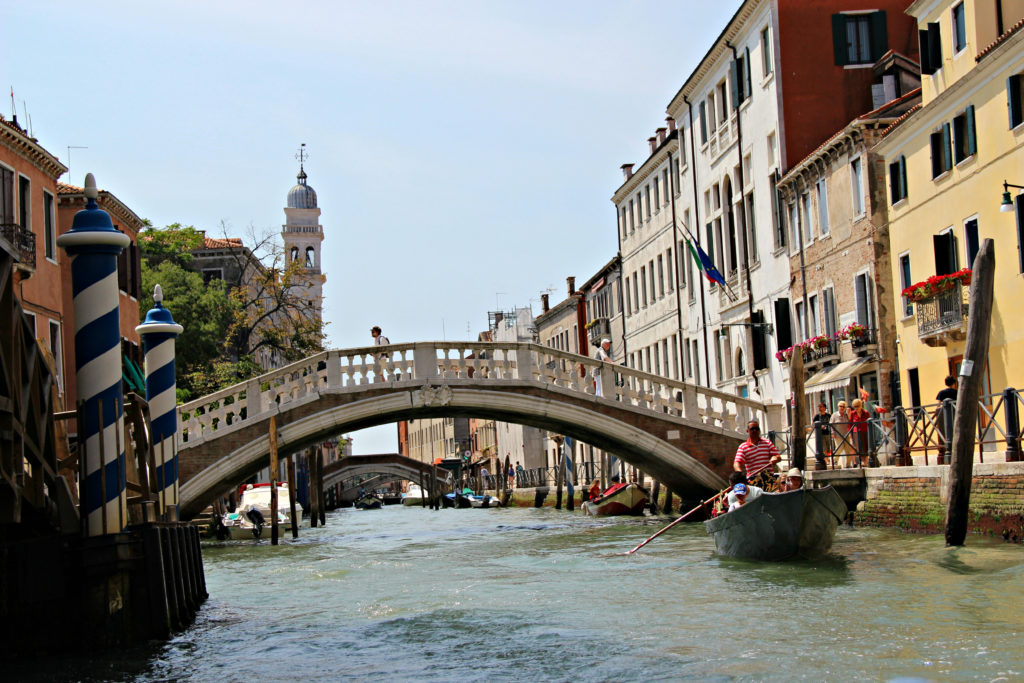
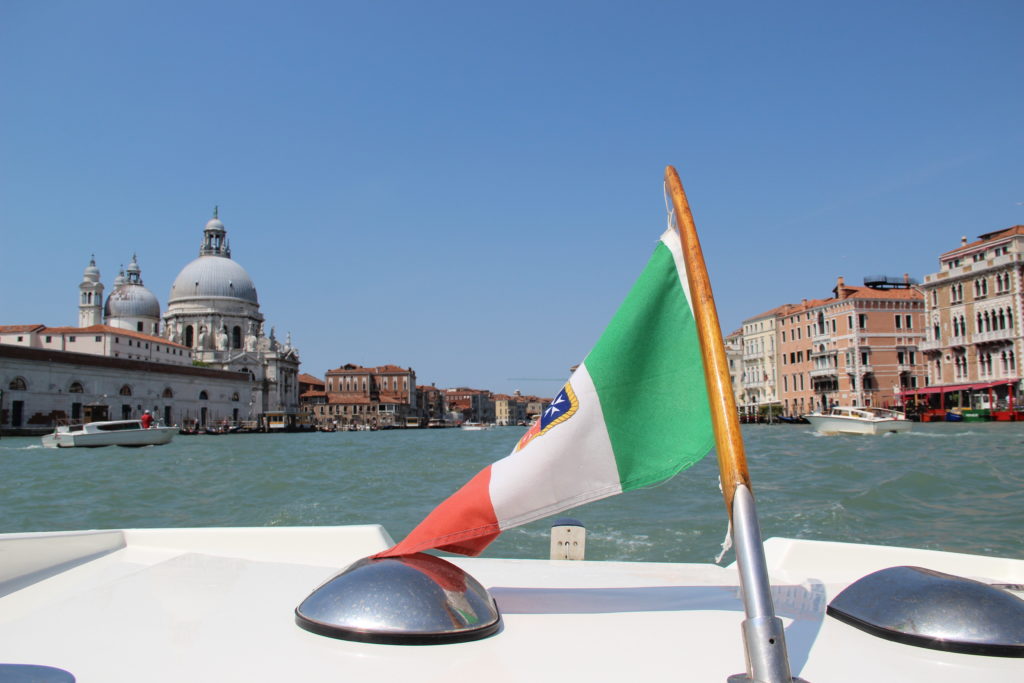

We got up early to visit St. Mark’s Square on our own. There were very few people on the square so we were really able to explore. Without all of the crowds, it made for an enjoyable experience.